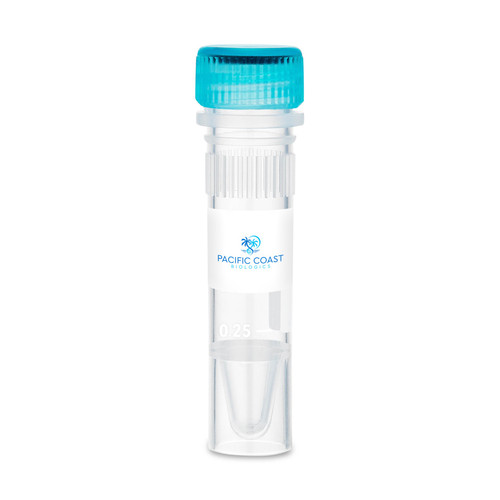PDGFs exist as disulfide-linked dimers comprising two polypeptide chains, PDGF-A and PDGF-B, each weighing between 12.0 and 13.5 kDa. Among the three naturally occurring PDGFs—PDGF-AA, PDGF-BB, and PDGF-AB—all are potent mitogens affecting various cell types, including smooth muscle cells, connective tissue cells, bone and cartilage cells, and certain blood cells. These growth factors are stored in platelet α-granules and released upon platelet activation, contributing to processes like hyperplasia, chemotaxis, embryonic neuron development, and respiratory tubule epithelial cell development.
PDGFs engage two distinct signaling receptors known as PDGFR-α and PDGFR-β. PDGFR-α serves as a high-affinity receptor for all three PDGF forms, while PDGFR-β selectively interacts with PDGF-BB and PDGF-AB. Recombinant Human PDGF-AA is a 28.5 kDa disulfide-linked homodimer consisting of two A chains, totaling 250 amino acids.
|
Product Specifications
|
|
| Species | Human |
| Published Species | Human, Monkey, Mouse, Rat |
| Expression System | E. coli |
| Amino acid sequence |
SIEEAVPAVC KTRTVIYEIP RSQVDPTSAN FLIWPPCVEV KRCTGCCNTS SVKCQPSRVH HRSVKVAKVE YVRKKPKLKE VQVRLEEHLE CACATTSLNP DYREEDTGRP RESGKKRKRK RLKPT
|
| Molecular weight | 28.5 kDa |
| Class | Recombinant |
| Type | Protein |
| Purity |
≥ 98% by SDS-PAGE gel and HPLC analyses.
|
| Endotoxin concentration | <1 EU/µg |
| Activity |
Determined by the dose-dependent stimulation of the proliferation of Balb/c 3T3 cells. The expected ED50 for this effect is 1.0-3.0 ng/ml.
|
| Conjugate | Unconjugated |
| Form | Lyophilized |
| Purification |
HPLC, SDS-PAGE
|
| Contains |
no preservative
|
| Storage conditions | -20°C |
CAUTION
For Research Use Only. Not for use in diagnostic procedures.













